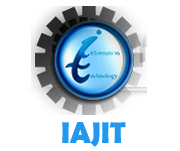Coverless Data Hiding in VoIP based on DNA Steganography with Authentication
|
Deepikaa Soundararajan School of Computer Science and Engineering Vellore Institute of Technology, India This email address is being protected from spambots. You need JavaScript enabled to view it. |
Saravanan Ramakrishnan School of Computer Science and Engineering Vellore Institute of Technology, India This email address is being protected from spambots. You need JavaScript enabled to view it. |
Abstract: Data hiding in Voice over Internet Protocol (VoIP) using coverless approach improves the undetectability by preserving the cover bits from modification. This paper focuses on hiding the secret message in VoIP streams using Deoxyribonucleic Acid (DNA) steganography approach. DNA steganography is known for its low cracking probability. The embedding process is done in two steps. The first step converts the VoIP sample, secret message and a user generated key (for Authentication) into m-RNA pattern during transcription and the second step converts the m-RNA to form a triplet during translation process to create a protein array, where the secret message is embedded. The secret message is extracted from the protein array by applying reverse translation and Transcription. The proposed approach improves the undetectability by leaving the cover bits unmodified with Perceptual Evaluation of Signal Quality (PESQ) values 84% comparatively greater than the state of art techniques.
Keywords: DNA, VoIP, coverless approach, data hiding, steganography.
Received March 27, 2021; accepted March 17, 2022

